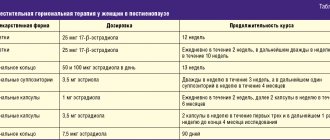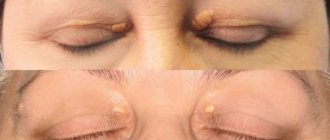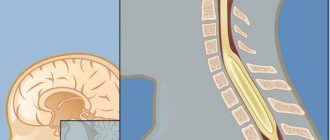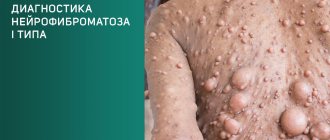Spinal muscle atrophy is a severe pathology that involves impaired motor function. There are four types of the disease, among which spinal amyotrophy Werdnig-Hoffmann, which develops in infancy and childhood, is considered the most unfavorable. This type of pathology is hereditary and cannot be cured, and the techniques used can only slightly alleviate the patient’s condition. By what signs is the disease recognized, and what to do if it is detected?
Spinal amyotrophy Werdnig-Hoffmann
What is Werdnig-Hoffman disease?
Werdnig-Hoffman disease is spinal muscular atrophy type 1 (SMA type 1). Spinal muscular atrophies are characterized by the degeneration of nerve cells (motor nuclei) in the lowest part of the brain (lower brainstem) and certain motor neurons of the spinal cord (anterior horn cells), leading to muscle weakness of the brainstem and limb muscles initially, followed by difficulty chewing , swallowing and breathing. Motor neurons are nerve cells that transmit nerve impulses from the spinal cord or brain (central nervous system) to muscle or glandular tissue.
Approximately 80 percent of patients with SMA have a severe form of it (i.e., Werdnig-Hoffmann disease or SMA 1). Infants with Werdnig-Hoffman disease experience severe weakness before 6 months of age and are unable to sit independently when placed. Muscle weakness, lack of motor development and low muscle tone are the main clinical manifestations of SMA type 1. Infants with the worst prognosis have problems sucking or swallowing. Some people experience diaphragmatic (abdominal) breathing in the first few months of life. Abdominal breathing is noted when the abdomen protrudes forward during inhalation. Typically, the rib cage expands during inhalation because the intercostal muscles (the muscles between the ribs) expand during inhalation. Abdominal breathing occurs when the intercostal muscles are weak and the diaphragm muscle is responsible for inhalation. The movement of the diaphragm (the muscle between the chest and abdomen) expands, causing the abdomen to move during the inhalation cycle. Twitching of the tongue (fasciculations) is often observed. Cognitive development is normal. Most affected children die before age 2 years, but survival may depend on the degree of respiratory function and respiratory support.
The different subtypes, SMA 0–4, depend on the age of onset of symptoms and the course and progression of the disease. SMA is a continuum or spectrum of disease with mild and severe ends. Patients with SMA 0 are very weak at birth, require immediate mechanical ventilation, and are never able to breathe on their own. Werdnig-Hoffmann disease, also known as spinal muscular atrophy type 1 (SMA 1) or acute spinal muscular atrophy, refers to people who begin to experience symptoms before the age of 6 months. Patients with SMA 2 become symptomatic before age 1 year and can sit but never walk. Patients with SMA 3 (Kugelberg-Welander disease) become symptomatic after 1 year and can walk for a period of time before losing motor ability. Patients with SMA type 4 will not develop symptoms until much earlier than 10 years.
All spinal muscular atrophies are inherited in an autosomal recessive manner. Molecular genetic testing has shown that all types of autosomal recessive SMA are caused by disorders or errors (mutations) in the SMN1 gene (from the English Survival of motor neuron 1, which means survival motor neuron 1) on chromosome 5.
How is this pathology diagnosed?
To make a correct diagnosis, a neurologist must have information about at what age a person first developed symptoms and how quickly they progress. He should also find out neurological data. Moreover, the most important information here is whether the patient has peripheral motor disorders along with complete preservation of sensitivity. It is also important for the neurologist to find out whether the patient has congenital abnormalities or bone deformities. Werdnig-Hoffmann amyotrophy can also be diagnosed by a neonatologist. Using the differential technique you can diagnose:
- myopathy;
- developing Duchenne muscular dystrophy;
- amyotrophic lateral sclerosis;
- syringomyelia;
- polio;
- floppy child syndrome;
- cerebral palsy;
- metabolic pathologies.
To confirm the diagnostic results, electroneuromyography is performed. This is the name of an examination of the neuromuscular system. It allows you to detect the changes necessary to exclude the primary muscular type of the disease, as well as to verify the presence of motor neuron disease. Biochemical blood tests are too small to detect any serious increase in creatine phosphokinase levels, which occurs during the development of muscle dystrophy. By doing an MRI/CT scan of the spine, it is occasionally possible to detect atrophy of the anterior horns of the spinal cord, but using this technique you can make sure that there is no other spinal disease.
A thorough examination is necessary to make a diagnosis.
A definitive diagnosis of Werdnig-Hoffmann amyotrophy is made only when data from a muscle biopsy and DNA analysis are obtained. Using a morphological examination of a muscle biopsy, it is possible to identify pathognomonic fascicular muscle atrophy, interspersed with zones of atrophy of myofibrils and healthy tissue, individual hypertrophied myofibrils, as well as places of connective growths. Mandatory genetic studies include direct and indirect diagnostics. The direct technique makes it possible to identify heterozygous carriage of a gene aberration, and this is necessary for genetic counseling of patients’ relatives, as well as spouses planning to have a child. In all this, quantitative research on the SMA locus genes is important.
By conducting a prenatal genetic examination, you can reduce the risk of giving birth to a baby suffering from Werdnig-Hoffmann amyotrophy. To obtain fetal genetic material, invasive fetal diagnostic techniques should be used:
- amniocentesis;
- chorionic villus biopsy;
- cordocentesis.
Cordocentesis
Having discovered Werdnig-Hoffmann amyotrophy in the fetus, the question of abortion should be raised.
Signs and symptoms
The symptoms and progression of SMA type 1 or Werdnig-Hoffmann disease vary from person to person. Affected infants are weak until 6 months of age. Early signs include general muscle weakness, decreased muscle tone (hypotonia) leading to “flaccidity,” abnormal joint flexibility (hypermobility), absent tendon reflexes, tongue twitching (fasciculation), and a frog-like posture with hips apart and knees bent. , as well as a wary (anxious) appearance. The facial muscles are not initially affected. Mental development is usually normal. The child usually has no head control, cannot roll over, and cannot sit or stand. In addition, children with SMA may have difficulty sucking, swallowing, and breathing; increased susceptibility to respiratory infections, or other complications that can lead to potentially life-threatening abnormalities in the first months or years of life.
Infants who appear to be developing normally in the months before muscle weakness begins may have a more slowly progressive course. The muscles of the lower extremities are disproportionately affected. As the disease progresses, decreased muscle tone and weakness can gradually spread and affect almost all voluntary muscles, with the exception of certain muscles that control eye movements.
The rate of progression of Werdnig-Hoffmann disease varies. Difficulty breathing (shortness of breath) and constipation may develop within a few months. The baby may be unable to swallow. Respiratory failure may occur, or food entering the lungs (aspiration) may cause suffocation. Most affected children die before age 2 years, but survival may depend on the degree of respiratory function.
Diet for spinal amyotrophy
At this time, no diet has been proven to be beneficial for SMA.
According to a large number of parents, a diet that includes a lot of protein or special food additives can increase the strength of the child's muscles. But, despite the obvious need for good nutrition for a sick child, it has not yet been proven that he needs a specific diet. Moreover, some products can even harm his body.
For example, the amino acid menu is sometimes fraught with even greater problems for those children who have too little muscle tissue in their bodies. According to some experts, if there is a lack of muscle tissue, it cannot properly process amino acids and then their level in the blood rises too much.
Doctors have not proven that any diet will improve the condition of a patient with SMA, but proper nutrition can make his life easier
Some children find it healthier to eat small amounts, more often than three or four times a day. You just need to divide for the patient the entire amount of food taken by a healthy peer of the patient per day into several parts.
Among patients with SMA there are those who are overweight. It is possible that the reason for this lies in a diet that is too high in calories coupled with a lack of exercise. If possible, the patient should, with the help of a doctor and nutritionist, bring his weight back to normal.
This is important not only for health and appearance, but also for those who care for such a patient. After all, they help the patient get up and move every day
Causes
All forms of spinal muscular atrophy are caused by mutations of the SMN1 gene (from the English Survival of motor neuron 1, which means survival motor neuron 1) in the chromosomal locus 5q11-q13. The second gene, known as the SMN2 (survival motor neuron 2) gene, plays a role in the development of SMA. The SMN2 gene is located next to the SMN1 gene on chromosome 5. Although SMA is caused by mutations in the SMN1 gene, there has been evidence that SMN2 influences the severity of the disease; people with more copies of the SMN2 gene tend to have a milder form of spinal muscular atrophy.
Chromosomes present in the nucleus of human cells carry its genetic information. Cells in the human body usually have 46 chromosomes. The pairs of human chromosomes are numbered 1 to 22, and the sex chromosomes are designated X and Y. Males have one X and one Y chromosome, and females have two X chromosomes. Each chromosome has a short arm, designated "p", and a long arm, designated "q". Chromosomes are further divided into many numbered bands. For example, "chromosomal locus 5q11-q13" refers to bands 11-13 on the long arm of chromosome 5. The numbered bands indicate the location of the thousands of genes present on each chromosome.
Genetic diseases are determined by a combination of genes for a certain trait, which are located on chromosomes received from the father and mother. All SMA is inherited in an autosomal recessive manner. Recessive genetic disorders occur when a person inherits the same abnormal gene for the same trait from each parent. If a person receives one normal gene and one disease gene, they will be a carrier of the disease, but usually asymptomatic. The risk for two carrier parents of passing on the defective gene and therefore having an affected child is 25% in each pregnancy. The risk of having a child who will be a carrier of the disease, like the parents, is 50% with each pregnancy. The probability that a child will receive normal genes from both parents and be genetically normal for a given trait is 25%.
The parents of several people with Werdnig-Hoffmann disease were close relatives. All people carry 4-5 abnormal genes. Consanguineous parents are more likely than unrelated parents to have the same abnormal gene, increasing the risk of having children with the recessive genetic disorder.
The specific underlying cause of Werdnig-Hoffmann disease is unknown. In SMA, the SMN1 and SMN2 genes produce (encode) a protein that is necessary for the proper functioning of motor neurons. The SMN1 mutation causes the gene to produce a defective protein that cannot perform its function. The SMN2 gene is thought to produce a partially effective protein that motor neurons need to function. This is why people with more copies of SMN2 have a milder form of SMA.
Additional genes may influence the development of SMA. Deletion of the NAIP (neuronal apoptosis inhibitory protein) gene, which is close to the SMN gene, may also be associated with SMA. A larger number of patients with Werdnig-Hoffman disease (SMA type 1) have NAIP deletions. Some researchers have suggested that loss of the NAIP gene and/or various mutations in the SMN gene may play a role in influencing disease severity. Some researchers also indicate that other genetic factors may contribute to the variable clinical manifestation of the disorder.
IV type
The first signs and symptoms appear at 30-50 years of age. The main complaints are muscle weakness and tremors. Due to atrophy, contractures appear in the joint area, limiting their mobility. Patients lose weight sharply.
Often accompanied by curvature of the spine and deformation of the chest.
The muscles of the legs are the first to be involved in the process, then the arms are gradually involved. As a rule, respiratory and swallowing functions are not impaired.
Most patients walk independently but limp, experience pain and discomfort. In rare cases, the progression of amyotrophy leads to loss of the ability to walk, and patients are forced to move in a wheelchair.
Disorders with similar symptoms
Symptoms of the following diseases may be similar to those of Werdnig-Hoffmann disease. Comparisons can be useful for differential diagnosis:
- Prader-Willi syndrome is a rare genetic disorder characterized by decreased muscle tone (hypotonia), feeding difficulties, and inability to grow and gain weight (failure to thrive) in infancy; short stature; abnormalities of the genital organs; mental retardation. In addition, between approximately 6 months and 6 years of age, patients may develop excess weight (obesity), especially in the lower parts of the body (eg, lower abdomen, thighs, buttocks). Progressive obesity occurs as a result of insufficient physical activity and excessive food consumption, which can be associated with a lack of satisfaction (fullness) after finishing a meal, obsession with food, unusual eating rituals and eating habits that cause overeating. Patients with Prader-Willi syndrome may also have a characteristic facial appearance due to certain features, including almond-shaped eyes, a thin upper lip, and full cheeks. The diagnosis is made on the basis of chromosomal analysis.
- Pompe disease is an inherited metabolic disorder caused by a complete or partial deficiency of the enzyme alpha-acid glucosidase. This enzyme deficiency causes excess glycogen to accumulate in the lysosomes of many cell types, but predominantly in muscle cells, including cardiac muscle cells. Pompe disease is a single continuum of disease with a variable rate of progression. The infantile form is characterized by severe muscle weakness and abnormally decreased muscle tone (hypotonia) and usually appears during the first few months of life. Additional abnormalities may include enlargement of the heart (cardiomegaly), liver (hepatomegaly), and/or tongue (macroglossia). Progressive heart failure usually causes life-threatening complications between 12 and 18 months of age. The childhood form usually begins in infancy or early childhood. The extent of organ damage may vary between individuals; however, skeletal muscle weakness is usually present with minimal cardiac involvement. Treatment for Pompe disease is available.
- Congenital muscular dystrophy (CMD) is a general term for a group of genetic muscle diseases that occur at birth (congenital) or in early infancy and have similar features on microscopic examination of muscle tissue. Congenital muscular dystrophy is usually characterized by decreased muscle tone (hypotonia); progressive muscle weakness and degeneration (atrophy); abnormally fixed joints, which occur when tissue, such as muscle fibers, thicken and shorten, causing deformities and limiting movement of the affected area (contractures); and delays in achieving basic motor skills such as sitting or standing without assistance. Some forms of AMD may be associated with structural defects of the brain and possibly mental retardation. The severity, specific symptoms, and progression of these disorders vary greatly. Almost all known forms of AMD are inherited in an autosomal recessive manner.
- Congenital myopathies are a group of muscle disorders (myopathies) that are present at birth (congenital). These disorders are characterized by muscle weakness, loss of muscle tone (hypotonia), decreased reflexes, and delay in achieving motor milestones (such as walking). In some diseases, muscle weakness progresses and can lead to life-threatening complications. This group of disorders includes central core disease, central core nemaline myopathy, hyaline body myopathy, central nuclear myopathy, and congenital structural myopathy with muscle fiber type disproportion. Congenital myopathies usually appear in the newborn (neonatal) period, but may appear much later, even in adult life. In most cases, the inheritance of these disorders is either autosomal recessive or autosomal dominant. The diagnosis is made by microscopic examination of muscle tissue.
Additional disorders are included in the differential diagnosis of spinal muscular atrophy, including arthrogryposis multiplex congenita , adrenoleukodystrophy , and myasthenia gravis congenita .
Differential methods for diagnosing the disease
Based on the symptoms, this pathology can be confused with congenital myopathy. This is poor muscle tone. A biopsy is used to exclude muscle hypotonia. Acute poliomyelitis is similar to spinal amyotrophy of Werdnig-Hoffmann. This pathology has a violent onset, accompanied by sharply elevated body temperature and multiple asymmetrical paralysis. After a few days, the acute phase of polio passes into the recovery phase. With glycogenosis, as well as congenital myopathies, muscle tone also decreases.
Spinal amyotrophy of Werdnig-Hoffmann is similar to other pathologies, so it is necessary to undergo additional diagnostics
But these pathologies differ from spinal amyotrophy in that they are provoked not by gene mutations, but by the following factors:
- metabolic problems;
- carcinoma;
- hormonal disorder.
In this case, it is necessary to exclude the following:
- Gaucher disease;
- Down syndrome;
- botulism.
Diagnostics
The diagnosis of SMA can be suspected based on a detailed patient history, a thorough clinical examination, and identification of characteristic signs. The diagnosis can be confirmed using molecular genetic testing, which can determine whether a mutation is present in the SMN gene. SMA is caused by partial or complete loss of the SMN gene, and about 95 percent of affected patients will have deletions of both copies of a specific part (exon 7 or exon of the gene. About 5 percent of those affected will have a deletion of exon 7 in one copy of the SMN gene and another mutation in the other copy SMN gene.
The diagnosis can be confirmed using molecular genetic testing, which can determine whether a mutation is present in the SMN gene. SMA is caused by partial or complete loss of the SMN gene, and about 95 percent of affected patients will have deletions of both copies of a specific part (exon 7 or exon of the gene. About 5 percent of those affected will have a deletion of exon 7 in one copy of the SMN gene and another mutation in the other copy SMN gene.
Before molecular testing became available, diagnosis was made using electroneuromyography (a neurophysiological test of muscle) and microscopic examination of samples of affected muscle tissue (biopsy).
Testing a carrier of the SMA gene is a molecular genetic study, or DNA diagnostics, which determines the number of copies of the SMN gene in which exons 7 and 8 are present.
How to predict the development of pathology
Currently, Werdnig-Hoffmann spinal amyotrophy is incurable. The prognosis is absolutely unfavorable. If this occurs in a baby in the first days after birth, he usually dies before he is six months old. If symptoms begin to appear after three months of age, the average age of such a child is a couple of years. The maximum age such a patient can live to is eight years. The early childhood type of this pathology progresses much more slowly, and such a child lives until adolescence - fourteen to fifteen years.
Yet current technology can allow sick children to live much longer. Thanks to ventilation of the lungs using modern portable devices, as well as nutrition using a tube that delivers food directly to the stomach, a small person can live for many more years.
Standard Treatments
There is no medicine that can cure Werdnig-Hoffmann disease. Treatment is aimed at specific symptoms that are present in each patient. Treatment may require a team of specialists.
Nusinersen is a prosurvival motor neuron 2 (SMN2) antisense oligonucleotide approved by the FDA for the treatment of SMA in adults and children. It is administered intrathecally. It increases the inclusion of exon 7 in SMN2 messenger ribonucleic acid (mRNA) and promotes the production of full-length SMN protein.
- Supportive treatment.
Medicines that are often used to improve symptoms include phenylbutyrate, valproic acid, albuterol, and hydroxyurea. Unfortunately, clinical trials have not shown any definitive evidence that these medications prevent progression of the disease. Treatment is aimed at controlling symptoms. Symptomatic treatment focuses on support with feeding, breathing and motor weakness.
Feeding problems.
Children often have difficulty feeding and may have malnutrition or aspiration pneumonia caused by difficulty swallowing. Percutaneous endoscopic gastrostomy (PEG) tubes can help with nutrition.
Breathing problems.
Children may require non-invasive ventilator support initially as the disease affects the respiratory muscles. As their symptoms worsen, they may require a tracheostomy and mechanical ventilation.
Motor weakness.
Physical and occupational therapy can help stretch, strengthen muscles, and minimize contractures. Surgical procedures and braces to help with scoliosis may be helpful.
Maintenance therapy
Werdnig-Hoffmann SMA is incurable, so patients are provided with supportive therapy, which is aimed at alleviating the symptoms of the disease. The main emphasis is on improving metabolism in the affected muscle and nerve fibers, which helps slow down the progression of the pathology. For this purpose, medications of several groups are used: neurometabolites, drugs to facilitate neuromuscular transmission, drugs to improve tissue trophism and blood circulation.
Most often prescribed:
- "Cerebrolysin";
- "Nootropil";
Solution for injections "Nootropil" - "Aminalon";
- a nicotinic acid;
- "Scopolamine";
- "Neuromidin."
Neuromidin tablets
The type of drugs, dosage, and duration of use are determined by the attending physician based on the results of the examination and taking into account the age of the child. In addition to medications, physical therapy, physiotherapeutic procedures, and gentle massage are indicated. For severe spinal deformity, orthopedic corsets and bandages are used.
Video - Werdnig-Hoffmann spinal amyotrophy
Muscular atrophy is not the only pathology of the motor system that is transmitted genetically. You can read about what other hereditary diseases of the spine exist and how to deal with them on our website.







